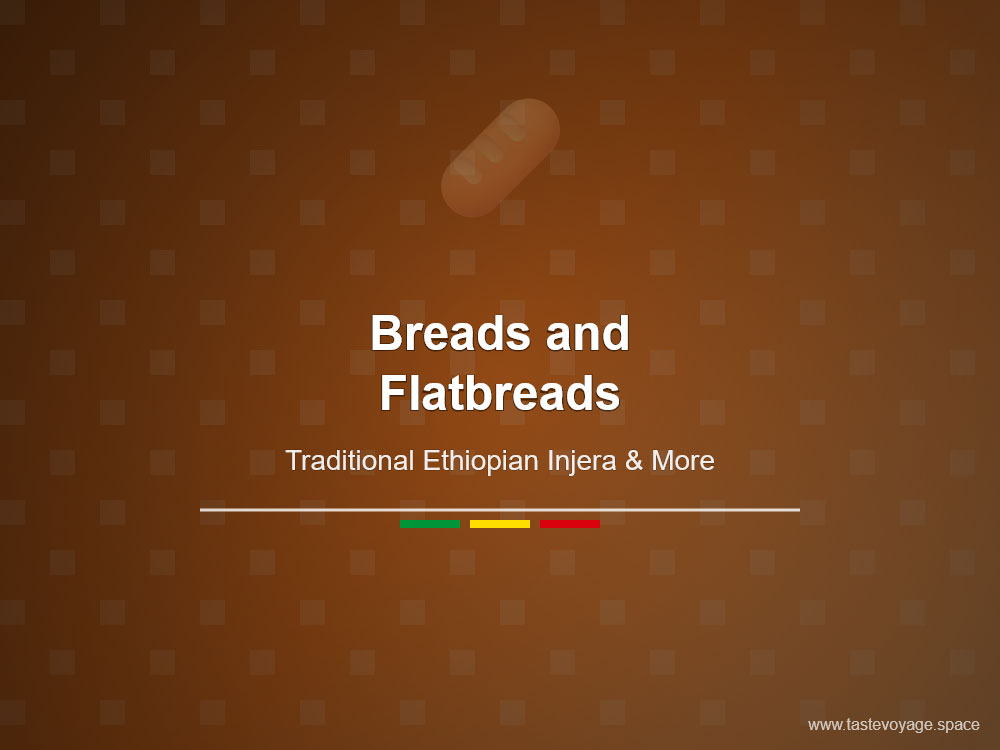Best Ethiopian Teff Bread Recipe for Beginners | Easy & Delicious
Travel the World Through Food >> Breads and Flatbreads>>Ethiopian Cuisine>> Best Ethiopian Teff Bread Recipe for Beginners | Easy & Delicious
Best Ethiopian Teff Bread Recipe for Beginners | Easy & Delicious
Best Ethiopian Teff Bread Recipe for Beginners
Ethiopian Cuisine is celebrated worldwide for its rich flavors, vibrant colors, and unique culinary traditions. At the heart of this culinary heritage lies teff bread, also known as injera—a staple food that embodies the essence of Ethiopian culture and community. For those eager to explore authentic Ethiopian food, mastering the art of making teff bread is a wonderful journey into a world of historical significance and culinary artistry.
The Cultural Significance of Teff Bread
Teff bread holds a special place in Ethiopian society. It is much more than just a daily meal; it is a symbol of hospitality, unity, and tradition. Traditionally served during communal gatherings, celebrations, and religious events, injera fosters social bonds by bringing people together around a shared table. Its unique texture and flavor evoke a sense of cultural pride, representing centuries of Ethiopian history and identity.
Ethiopian communities have cultivated teff grains for thousands of years. This tiny, resilient cereal is a vital part of their agricultural landscape and culinary practices. The preparation of injera often follows age-old recipes passed down through generations, emphasizing respect for tradition and the importance of food as a cultural connector.
The Culinary Significance of Teff in Ethiopian Cuisine
Teff is renowned for its nutritional benefits, offering a rich source of protein, fiber, and essential minerals such as iron and calcium. Its natural, nutty flavor enhances the taste profile of injera, making it a savory and satisfying dish. Unlike many other breads, injera’s spongy texture and slightly sour taste make it a perfect accompaniment to various Ethiopian Stews and vegetable dishes.
What makes teff bread truly distinctive is its fermentation process. This natural fermentation not only boosts flavor but also enhances digestibility and nutritional absorption. The process adds complexity and depth to the bread, making each bite a flavorful experience rooted in tradition.
The Unique Culinary Technique Behind Injera
Making injera is an art that combines patience, skill, and respect for tradition. The batter, typically made from teff flour and water, undergoes fermentation for several days. This fermentation creates the characteristic tanginess and aeration that give injera its signature sponginess. Once prepared, the batter is poured onto a hot griddle or clay plate and cooked into a thin, round pancake.
The result is a beautifully textured bread with a delicate, sour flavor that complements Ethiopian dishes perfectly. Its versatility makes it suitable not only as a base for various stews, known as wats, but also as a utensil for scooping up food, fostering a communal dining experience cherished in Ethiopian culture.
Embracing Ethiopian Food Traditions
Trying your hand at making injera, especially with a simple teff bread recipe suitable for beginners, opens a window into Ethiopian culinary history. It allows you to appreciate the delicate balance of tradition, nutrition, and flavor that makes this bread a culinary treasure.
Enjoying Ethiopian teff bread connects you to a rich cultural tapestry—a tradition of food that celebrates community, resilience, and the artistry of simple ingredients. Whether served at a festive gathering or enjoyed as part of an everyday meal, injera’s presence underscores the timeless beauty of Ethiopian culinary heritage.
If you’re looking to explore new flavors and deepen your appreciation for Ethiopian cuisine, mastering the art of teff bread is a rewarding step. Its cultural significance and culinary excellence make it a dish worth celebrating and sharing.
